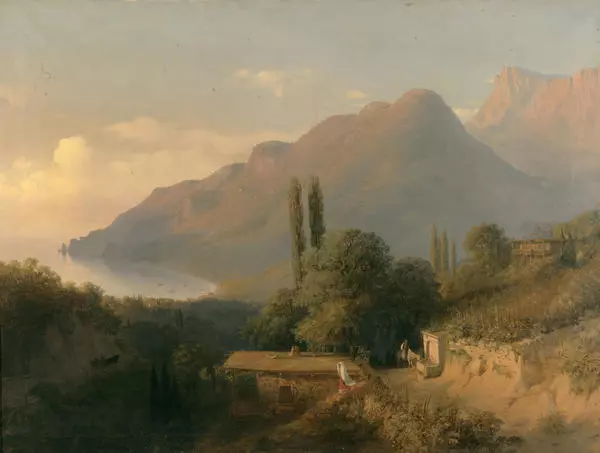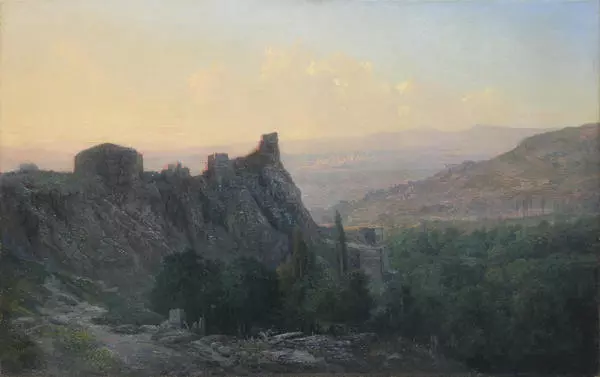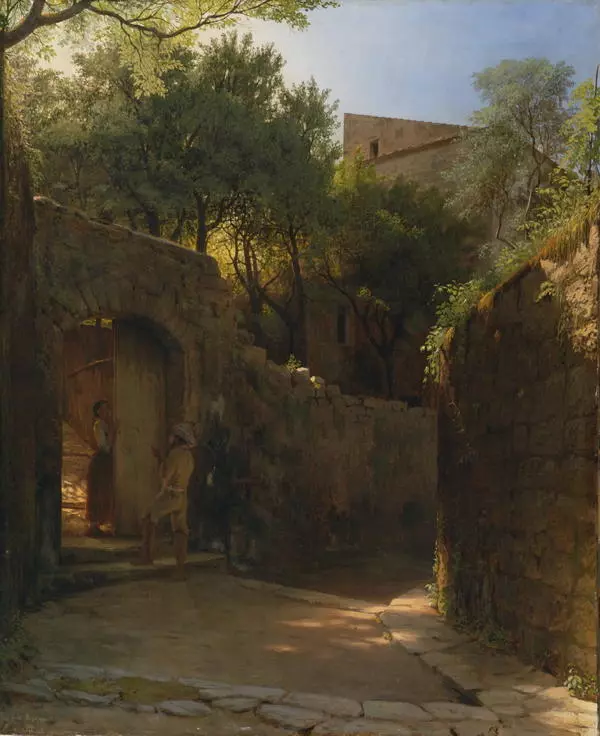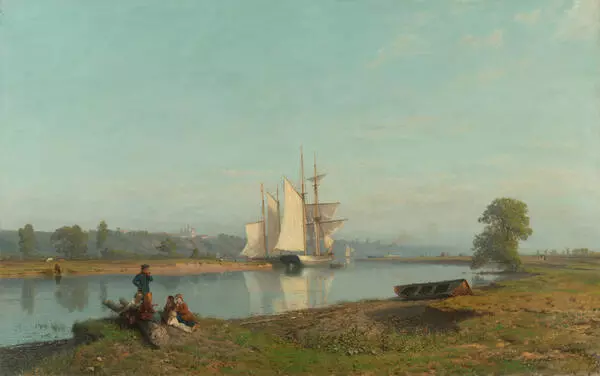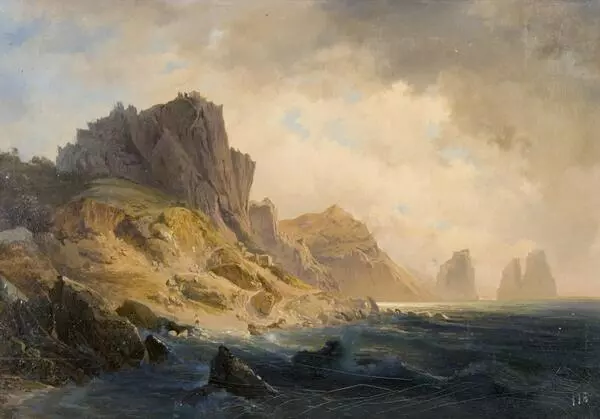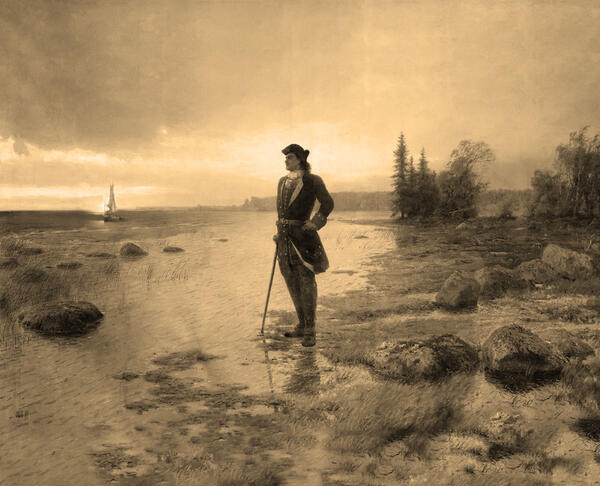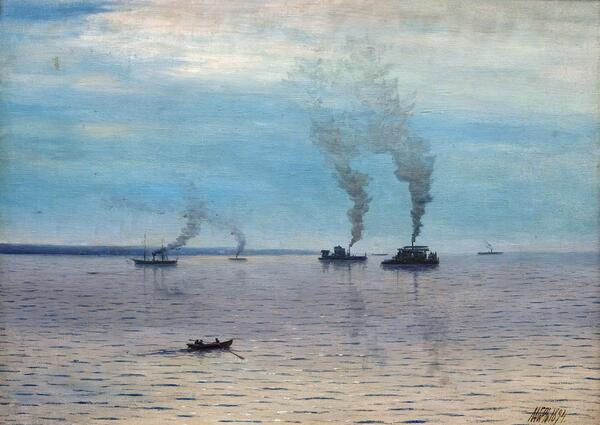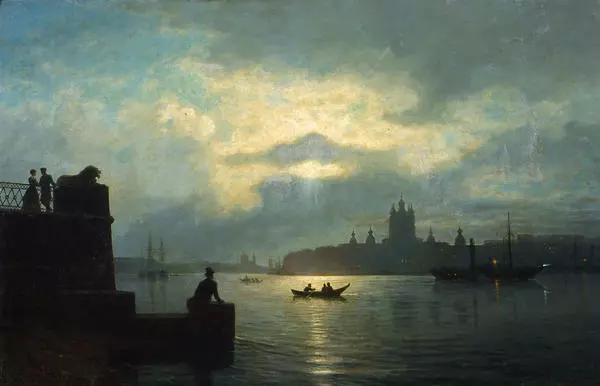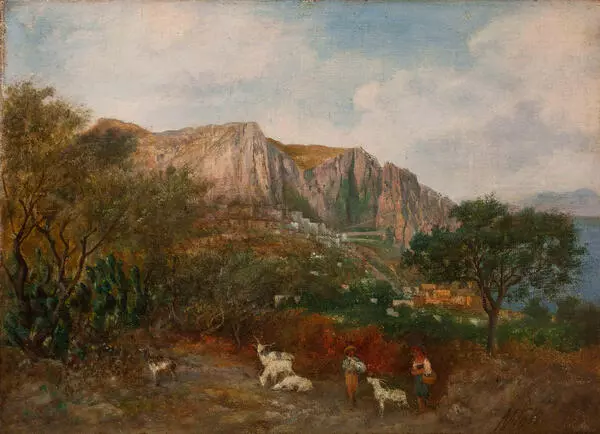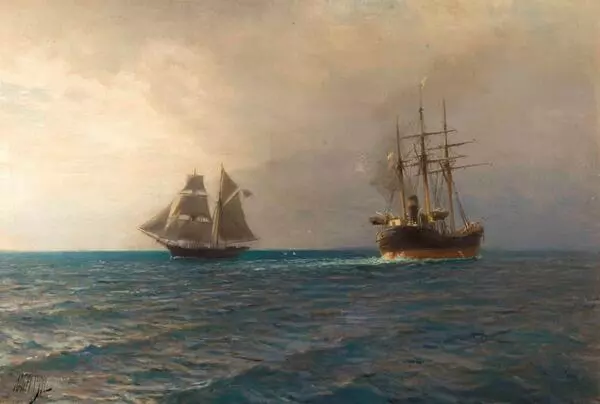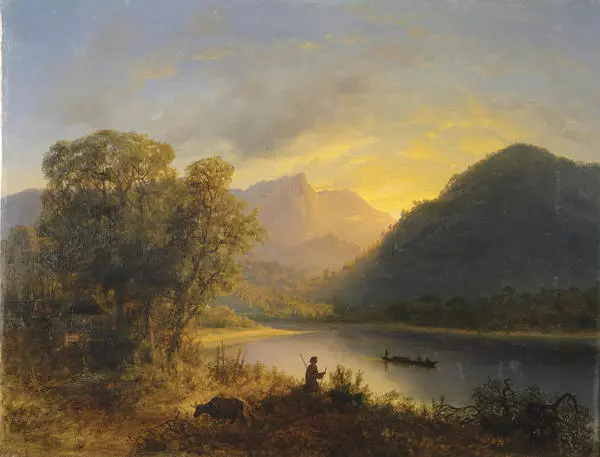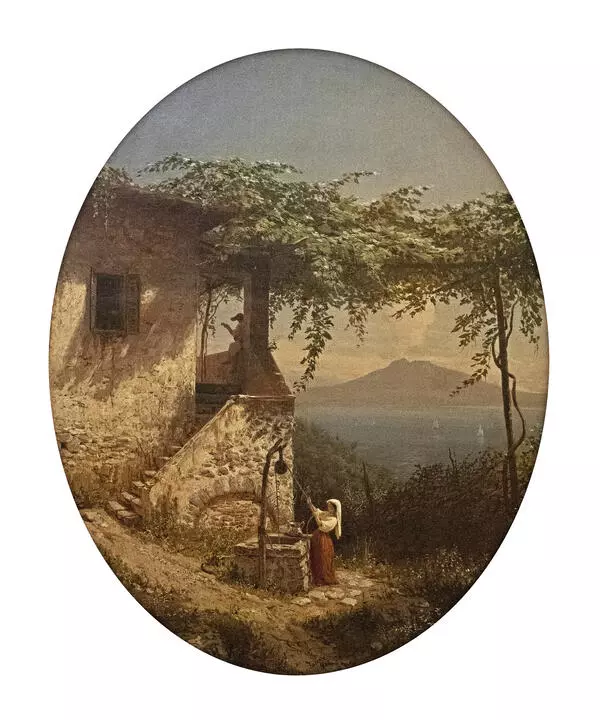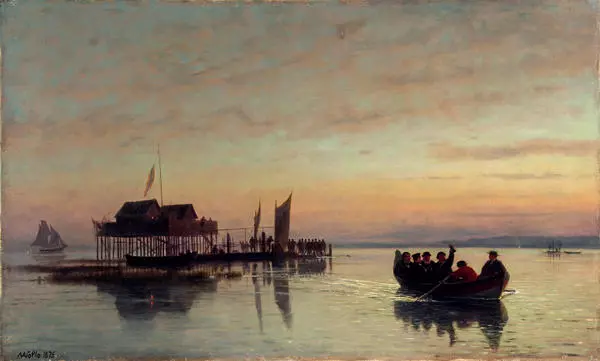The painting ‘Mountain Landscape’ is one of the multiple works by Lev Lagorio featuring the Caucasus Mountains. This panoramic landscape has characteristics commonly found in the romantic painting of the19th century, for example, the dynamic silhouettes and the depiction of spiritualized nature. Lagorio worked on the most minor details of the picture and enhanced the landscape with the contrast of light and shadow, which brings a special sense of reality to the canvas.
Lev Lagorio is a Russian painter of Italian ancestry, a master of mountain landscapes and seascapes, a graduate of the Imperial Academy of Arts. He was born in Feodosia in the family of Felix Lagorio — a merchant, Freemason, Vice-Consul for the Kingdom of the Two Sicilies. In 1839–1840, he received his first artistic training in the studio of Ivan Aivazovsky and became one of his first students. The talent of the young artist was noticed by the Feodosia mayor Alexander Kaznacheyev; with his support Lagorio was able to enroll at the Imperial Academy of Arts in 1843.
Lagorio graduated from the Academy with a major golden medal, which gave him the right to travel abroad. After he became a Russian citizen, the artist went to Europe, where for eight years he studied painting with famous masters and improved his skills. He was awarded the title of professor for the works created during his trip abroad.
In the 1850s and 1860s, Lev Lagorio visited the Caucasus on several occasions. His first trip was in 1851 while studying at the Academy of Arts. In 1861, he returned to the Caucasus, after which he presented to Emperor Alexander II three paintings with Caucasian views: ‘Darial Gorge, ” “Elbrus, ” and “The Gut Mountain.” For these works, the artist was awarded the Order of Saint Anna of the 3rd class. In 1863, Lagorio traveled to the Caucasus again with the entourage of Grand Prince Mikhail Nikolayevich. During this trip, the artist had a chance to participate in battles with the highlanders; he was awarded swords for bravery in battle as an addition to the already existing order.
Lev Lagorio also managed to be a military correspondent for the Russo-Turkish War of 1877-1878. He expressed his emotions of what he saw and depicted his experiences in battle canvases. In 1885, the government commissioned the artist to paint a series of military paintings; for this purpose, he visited the battlefields.
Lev Lagorio is a Russian painter of Italian ancestry, a master of mountain landscapes and seascapes, a graduate of the Imperial Academy of Arts. He was born in Feodosia in the family of Felix Lagorio — a merchant, Freemason, Vice-Consul for the Kingdom of the Two Sicilies. In 1839–1840, he received his first artistic training in the studio of Ivan Aivazovsky and became one of his first students. The talent of the young artist was noticed by the Feodosia mayor Alexander Kaznacheyev; with his support Lagorio was able to enroll at the Imperial Academy of Arts in 1843.
Lagorio graduated from the Academy with a major golden medal, which gave him the right to travel abroad. After he became a Russian citizen, the artist went to Europe, where for eight years he studied painting with famous masters and improved his skills. He was awarded the title of professor for the works created during his trip abroad.
In the 1850s and 1860s, Lev Lagorio visited the Caucasus on several occasions. His first trip was in 1851 while studying at the Academy of Arts. In 1861, he returned to the Caucasus, after which he presented to Emperor Alexander II three paintings with Caucasian views: ‘Darial Gorge, ” “Elbrus, ” and “The Gut Mountain.” For these works, the artist was awarded the Order of Saint Anna of the 3rd class. In 1863, Lagorio traveled to the Caucasus again with the entourage of Grand Prince Mikhail Nikolayevich. During this trip, the artist had a chance to participate in battles with the highlanders; he was awarded swords for bravery in battle as an addition to the already existing order.
Lev Lagorio also managed to be a military correspondent for the Russo-Turkish War of 1877-1878. He expressed his emotions of what he saw and depicted his experiences in battle canvases. In 1885, the government commissioned the artist to paint a series of military paintings; for this purpose, he visited the battlefields.




